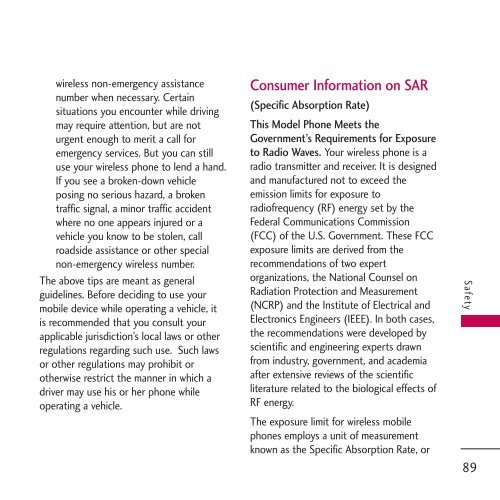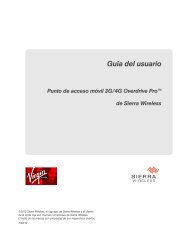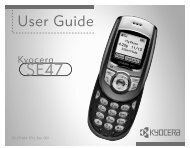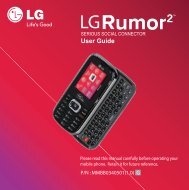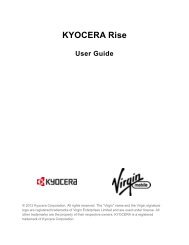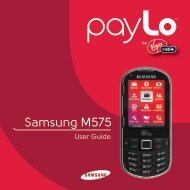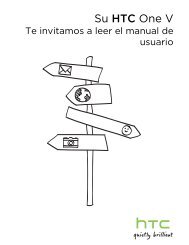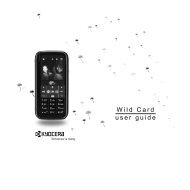Untitled - Virgin Mobile
Untitled - Virgin Mobile
Untitled - Virgin Mobile
Create successful ePaper yourself
Turn your PDF publications into a flip-book with our unique Google optimized e-Paper software.
wireless non-emergency assistance<br />
number when necessary. Certain<br />
situations you encounter while driving<br />
may require attention, but are not<br />
urgent enough to merit a call for<br />
emergency services. But you can still<br />
use your wireless phone to lend a hand.<br />
If you see a broken-down vehicle<br />
posing no serious hazard, a broken<br />
traffic signal, a minor traffic accident<br />
where no one appears injured or a<br />
vehicle you know to be stolen, call<br />
roadside assistance or other special<br />
non-emergency wireless number.<br />
The above tips are meant as general<br />
guidelines. Before deciding to use your<br />
mobile device while operating a vehicle, it<br />
is recommended that you consult your<br />
applicable jurisdiction’s local laws or other<br />
regulations regarding such use. Such laws<br />
or other regulations may prohibit or<br />
otherwise restrict the manner in which a<br />
driver may use his or her phone while<br />
operating a vehicle.<br />
Consumer Information on SAR<br />
(Specific Absorption Rate)<br />
This Model Phone Meets the<br />
Government’s Requirements for Exposure<br />
to Radio Waves. Your wireless phone is a<br />
radio transmitter and receiver. It is designed<br />
and manufactured not to exceed the<br />
emission limits for exposure to<br />
radiofrequency (RF) energy set by the<br />
Federal Communications Commission<br />
(FCC) of the U.S. Government. These FCC<br />
exposure limits are derived from the<br />
recommendations of two expert<br />
organizations, the National Counsel on<br />
Radiation Protection and Measurement<br />
(NCRP) and the Institute of Electrical and<br />
Electronics Engineers (IEEE). In both cases,<br />
the recommendations were developed by<br />
scientific and engineering experts drawn<br />
from industry, government, and academia<br />
after extensive reviews of the scientific<br />
literature related to the biological effects of<br />
RF energy.<br />
The exposure limit for wireless mobile<br />
phones employs a unit of measurement<br />
known as the Specific Absorption Rate, or<br />
Safety<br />
89


